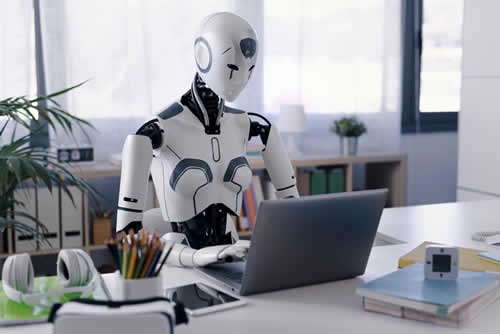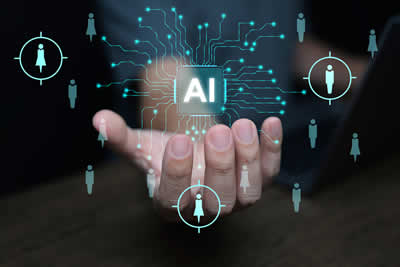Nowadays, the use of Artificial Intelligence (AI) and automation in Human Resources (HR) isn't just a trend but a fundamental shift. That's because they are redefining how traditional HR functions are carried out, improving efficiency and quality alike. This article examines key areas like recruitment strategy, employee onboarding, performance management, and more. We'll also look at the benefits and challenges of adapting to this new way of working.

Understanding the Role of AI and Automation in HR
Processes are being streamlined, manual tasks are being reduced, and data-driven decision-making is being enabled. From automating routine administrative tasks to providing sophisticated analytics, these technologies are providing huge advantages. In short, AI algorithms can analyze vast amounts of data, while automation tools handle repetitive tasks, allowing people to focus on higher level tasks.
Key Areas Where AI is Transforming Human Resources
1. Recruitment and Hiring
Online recruitment is one of the most critical functions of HR, and
AI is revolutionizing this area. AI-powered tools can sift through thousands of resumes, identifying candidates who best match the job requirements. This enables more candidates to be reviewed in a phenomenally shorter time … and eliminates human bias into the bargain. AI-driven chatbots can also engage with candidates in real-time, answering their queries and even scheduling interviews.
For example, AI can analyze keywords, skills, and experience levels from resume templates and match them with job descriptions to identify the most promising candidates. This doesn't just speed up the hiring process but it also improves its quality.
2. Onboarding New Employees
The onboarding process is one of the most under-rated (and therefore neglected) considerations when setting new hires up for success. It's amazing how many companies tend to sit new employees at their desks after a quick walkabout, then expect them to get on with things. This is especially prevalent where someone has previous experience in a similar role elsewhere. The only guidance they may get is from an already-busy supervisor who's told to “show them the ropes”. What about the company's processes, their objectives … their ethos??

Well, AI and automation tools streamline this process with personalized onboarding. New recruits can be taken through the necessary paperwork, training modules, and introductory materials, and this makes for a much smoother transition into the company. Tools like AI pitch deck generator, for example, can create and present slides to help new employees to digest what they need. They're then ready to use it whenever they need in the future.
AI-driven platforms can also use the new employee's role and preferences to customize onboarding program materials. This personalization helps them to acclimatize more quickly and feel more connected to the company and the people around them.
3. Performance Management
It's now possible to use AI to get real-time feedback into how people are performing. And this is transforming performance management.
This means that traditional performance reviews, which are often conducted annually or semi-annually, are
evolving into continuous feedback systems. There may be an “annual review” but it will be based on the two-way communication which has occurred throughout the year. These systems use different performance metrics to provide managers with the kind of information that supports further growth and development in (and of) the team.

And by keeping in touch like this, AI tools can analyze performance data to identify trends and patterns, helping managers address issues in a productive and timely way. For instance, if someone is consistently missing deadlines, AI can flag this early, allowing for immediate interventions and (where needed) support.
4. Engaging Your Staff – And Keeping them!
Employee engagement and retention are absolutely fundamental to any concept of success. AI can play a big role in staff engagement by analyzing their feedback from surveys and even social interactions. And by understanding employee concerns – and their preferences – companies can put targeted strategies in place to boost morale.
Looking at it from another angle, AI-powered analytics can also predict the risk of staff turnover by identifying what may be demotivating them. This allows HR teams to address issues before they create problems.
5. Payroll and Benefits Management
Managing payroll and benefits is complex and time-consuming. Automation simplifies these processes by handling calculations, deductions, and compliance checks. AI-driven systems can also assist with managing administration, ensuring employees receive accurate and timely information.
Automated payroll systems reduce the risk of errors and ensure compliance with regulations. And using AI can also provide an understanding of benefits utilization, which helps HR teams base their offerings on employee needs … and their preferences.
Incorporating Custom Branding into HR Strategies
Companies also look for innovative ways to improve employee experience, and brand identity can come in here. Custom company products provide a great way to build team spirit. Company-branded gifts to employees – like
printed t-shirts mugs, hoodies, etc – are an excellent tool to raise morale in a way that's undeniably connected to the company. The effect isn't just to increase staff engagement, but also to give them a reason to take pride in the organization, which really does bind people together in a positive way.
Assessing The Benefits
All this offers substantial benefits, significantly boosting efficiency and smooth operations. By automating repetitive tasks like scheduling interviews or processing payroll, the HR team can redirect their focus towards longer term matters like talent management and organizational development.
In addition, it increases the accuracy of processes by minimizing the risk of human error, and this leads to more reliable outcomes. And of course, data analytics support informed decision-making and strategic planning.

Challenges and Considerations
One of the main challenges, however, is data privacy. Because companies need to handle substantial amounts of sensitive employee data, they must have stringent data protection measures in place. We're getting into another subject now (but see the links at the end of the article for more information) but they need to use advanced encryption techniques, regular security audits, and data protection compliance. If they don't do this, they run the very real risk of losing sensitive information, destroying employee trust … and likely legal repercussions.
But another potential problem is bias and fairness in AI algorithms. Ever since the early days of computers, there has been the mantra of “cr*p in, cr*p out” and this is true nowadays, too. Remember that AI systems learn from historical data, and can therefore perpetuate any biases in that data. To counteract this, companies need to continuously review and adjust their algorithms, maybe using varied datasets and fairness audits.
Preparing for the Future: How HR Can Adapt
As you may imagine, to make the most of opportunities – and avoid problems – there's a real need for training at all levels. And not just a one-off “Introduction To AI And Automation” course either! Continuous learning ensures that people don't just learn about what's available now, but what they can do – and what lies ahead – in the future.
And don't forget the benefits of a positive culture that welcomes technological innovation. There is often some resistance to changes brought about by technology, but this is usually brought about by a fear of the unknown, So getting people to think of technology as an enabler rather than a disruptor will helps smooth the transition to new systems. Let's be realistic, too: companies need to step up – or they may die. So it's better (and easier) to do this with a forward-thinking mindset that supports employees through the adaptation process.
Conclusion
AI and automation are fundamentally transforming the HR scene, but although they offer game-changing benefits, they also present challenges. However, by welcoming the technologies involved, managers can ensure the integration of this technology will play a pivotal role in shaping the whole future of work.




























